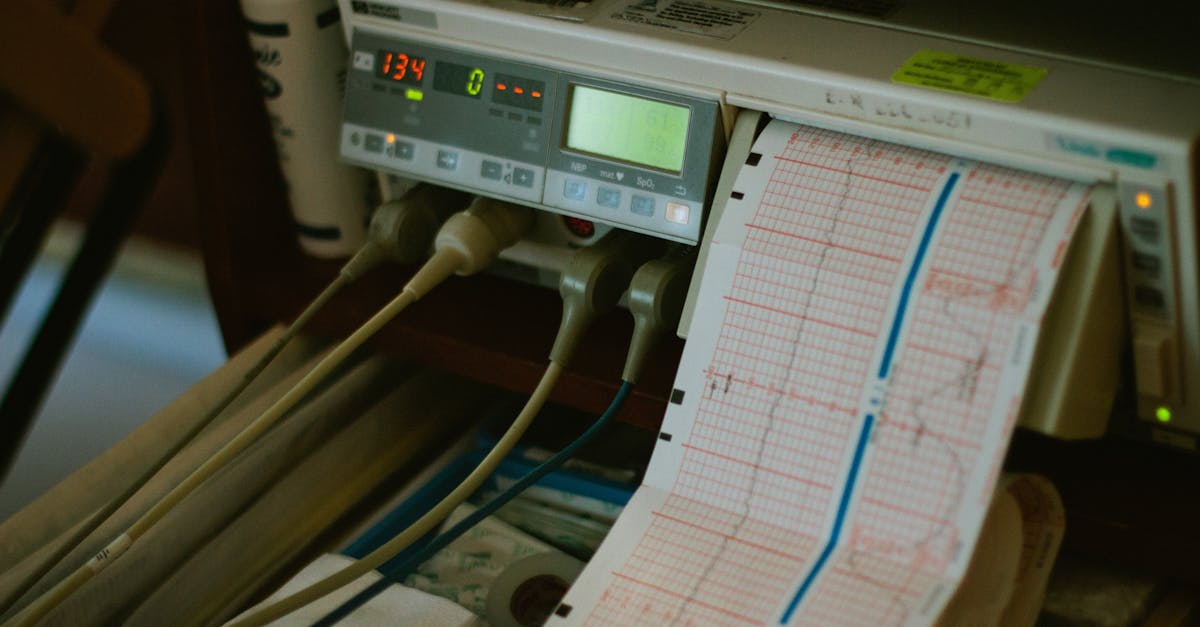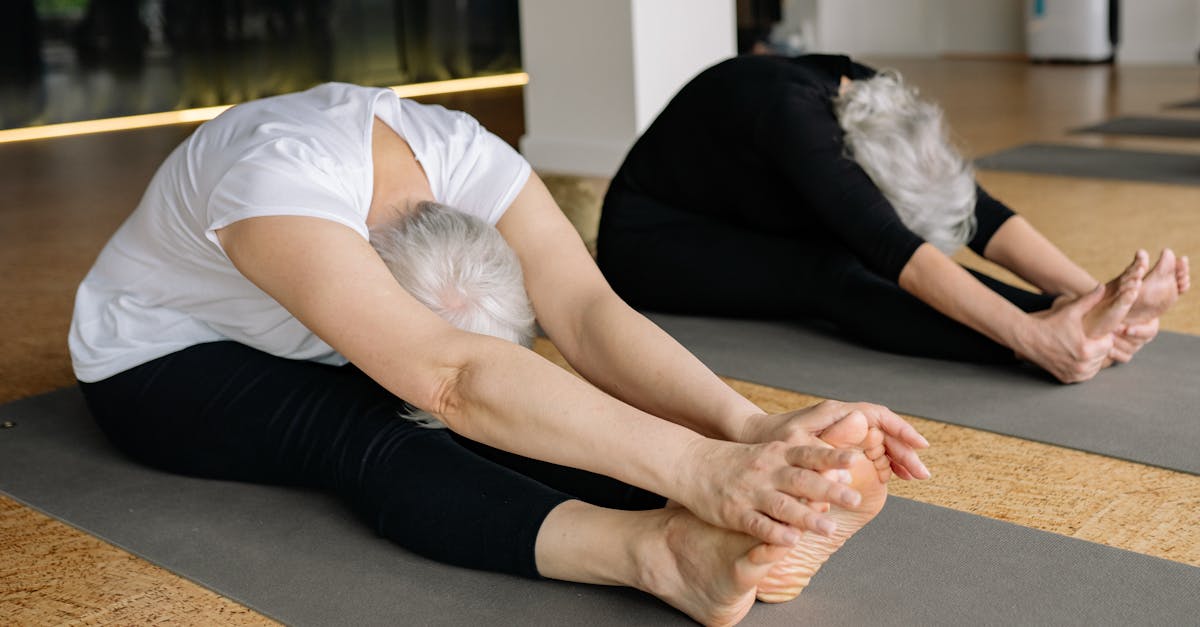Suffering from a rotator cuff injury and shoulder pain? You’re not alone.
In Short: Experiencing shoulder pain from a rotator cuff injury? Discover the best exercises for rotator cuff injury that target shoulder pain relief and enhance your mobility. By incorporating specialized shoulder pain exercises, you can significantly improve your strength and reduce discomfort associated with conditions like frozen shoulder and shoulder impingement. Pulse Align Clinics provide a simple yet effective approach to neuromodulation, aimed at restoring your body’s natural balance. Reclaim your health and wellness at Pulse Align Clinics. Book your appointment today!
Are you struggling with lower back pain and poor posture?
Top exercises to aid rotator cuff recovery: exploring Pulse Align’s essential synergies provide an integral path to alleviate shoulder pain associated with rotator cuff injuries. Many individuals face the challenges of shoulder pain when lifting arm, often due to conditions like bursitis, frozen shoulder, or shoulder impingement. By engaging in targeted shoulder pain exercises, clients can enhance their recovery through improved posture, ultimately leading to significant shoulder pain relief. With a focus on core strengthening and strategic movement, Pulse Align empowers individuals to reclaim their strength and mobility.

“`html
If you’re searching for ways to enhance your shoulder wellness, the journey towards improving your posture and achieving neuromuscular recalibration begins here. Whether you’re feeling slight discomfort or simply want to enhance your overall well-being, incorporating the right exercises can make a significant difference.
Understanding the Importance of Muscle Tone and Balance
Muscle tone and balance are fundamental to maintaining a healthy lifestyle. Often, day-to-day activities can lead to imbalances, affecting your overall posture and leading to a feeling of discomfort. At Pulse Align, we shine a light on these essential aspects by utilizing gentle techniques that promote natural body function restoration. Our approach focuses on muscle tone symmetry and posture improvement, helping you feel more aligned and supported in your movements.
Holistic Benefits of Pulse Align’s Approach
The benefits of a holistic approach are profound. By facilitating your body’s natural healing process, Pulse Align positions itself as a unique wellness solution. Our gentle stimulation techniques, which are designed for every member of the family—including children and pregnant women—help create a space for your body to express its healthy potential. Many clients have discovered how focusing on posture can lead to a natural reduction in tension and an increase in flexibility. Investing in your wellness journey leads to remarkable experiences.
Client Testimonials That Inspire
Our clients have shared inspiring testimonials about their experiences with Pulse Align. One client expressed, “Since incorporating gentle exercises tailored by Pulse Align into my routine, I’ve improved my posture naturally and noticed a significant reduction in neck discomfort.” Another enthusiastic feedback highlights, “I feel more connected to my body and my movements have become more fluid.” These stories reflect the positive transformations that are possible when you embrace a nurturing path to wellness.
Take the Next Step Towards Wellness
Are you ready to enhance your shoulder wellness? Explore how you can transform your health journey by booking a consultation with Pulse Align. With multiple locations available in cities like Montreal, La Prairie, Tremblay, and more, reaching out for personalized guidance is just a click away. Remember, our services complement your healthcare journey and promote natural body function restoration. Join us today and discover the benefits that Pulse Align can bring to your life.
- Pendulum Swings: Gentle mobilization to enhance fluid movement.
- External Rotation: Builds shoulder stability with resistance band strength.
- Scapular Retraction: Promotes better posture through shoulder blade alignment.
- Internal Rotation: Encourages shoulder strength and balance.
- Sleeper Stretch: Aids in relieving discomfort from frozen shoulder.
- Wall Slides: Enhances shoulder movement and flexibility.
- Resistance Band Rows: Strengthens shoulder muscles while minimizing strain.
- Isometric Holds: Increases stability with low impact on joints.
- Doorway Stretch: Relieves tightness and improves overall flexibility.
- Shoulder Blade Squeeze: Strengthens upper back for enhanced support.

Are you among those struggling with shoulder pain or a rotator cuff injury? You’re not alone. Many individuals face difficulties ranging from frozen shoulder to shoulder pain when lifting an arm due to various causes, including bursitis, tendinitis, and even sports injuries. Fortunately, this article introduces the best exercises for rotator cuff injury recovery being advocated by Pulse Align—a holistic wellness service concentrating on neuromuscular health, posture improvement, and holistic recalibration.
Understanding Rotator Cuff Injury and Its Symptoms
A brachial plexus injury can lead to significant discomfort and limit your daily activities. Many individuals experience shoulder pain due to various factors such as poor posture or repetitive motions. Common symptoms may include discomfort at night, diminished strength, or difficulty with overhead movements. Recognizing these symptoms can guide you toward proactive solutions.
Key Exercises for Shoulder Pain Relief
Here, we detail some of the most effective shoulder pain exercises recommended by Pulse Align, focusing on engaging and strengthening your rotator cuff.
- Pendulum Swings: This gentle movement aids in mobilizing the shoulder joint without strain. Lean forward while allowing your affected arm to hang loose and swing it in circular motions. This enhances blood circulation and alleviates stiffness.
- External Rotation: Utilizing resistance bands, this exercise strengthens the stabilizing muscles of your rotator cuff. With your elbow tucked, rotate your arm outward to promote stability.
- Scapular Retraction: Pinch your shoulder blades together while either sitting or standing. This exercise supports posture correction and minimizes shoulder pain.
- Wall Slides: Stand with your back against the wall and slide your arms up and down. This movement encourages proper shoulder patterns while enhancing mobility and overall function.
- Sleeper Stretch: Another significant exercise that helps relieve discomfort associated with frozen shoulder. It promotes flexibility within the shoulder joint.
Integrating Core Strengthening and Trunk Exercises
Complementing core strengthening and trunk exercises into your shoulder rehab routine can achieve amazing results. These exercises contribute to overall balance and stability, crucial in alleviating shoulder pain at night or during daily activities.
Take a moment to perform core stability routines or trunk rotations to enhance the work you are doing for your shoulder. Simple exercises such as planks or gentle side bends can motivate increased muscle tone and symmetry.
How to Integrate These Exercises into Daily Life
Finding ways to incorporate these exercises into your everyday activities is key. Consider performing pendulum swings during brief breaks or wall slides while watching TV. This consistent integration can significantly enhance your recovery and promote overall natural balance.
Call to Action
If you are ready to take control of your wellness journey and would like to learn more about personalized exercise plans, we happily invite you to schedule a consultation with Pulse Align. Our clinics in Montreal, La Prairie, and Panama City stand ready to support your recovery. Reclaim your mobility and enhance your well-being today!
| Exercise | Wellness Focus |
|---|---|
| Pendulum Swings | Promotes gentle mobility, enhancing overall shoulder relaxation. |
| External Rotation | Strengthens stabilizing muscles while fostering natural balance. |
| Scapular Retraction | Supports posture improvement and encourages body alignment. |
| Wall Slides | Enhances movement patterns, nurturing fluidity in shoulder motion. |
| Sleeper Stretch | Aids in releasing tension, allowing for comfortable shoulder mobility. |
| Resistance Band Rows | Builds strength and muscle tone, contributing to symmetry. |
| Isometric Holds | Encourages stability, enhancing core engagement and confidence. |
| Doorway Stretch | Facilitates flexibility while alleviating tightness in the shoulder. |
| Shoulder Blade Squeeze | Strengthens upper back for improved support and natural posture. |
| Internal Rotation | Enhances overall shoulder stability fostering a balanced approach. |

Client Testimonials: Embracing Holistic Recovery with Pulse Align
“I never imagined that my journey to recover from a rotator cuff injury could be so transformative. The exercises I learned at Pulse Align have not only helped alleviate my pain but have also restored my mobility. Their holistic approach actively supported my body’s natural ability to recalibrate. Living in Mont-Royal, I found the personalized attention at Pulse Align immensely valuable. The gentle techniques really made a difference in my overall wellness.” – Client A
“Pulse Align has changed my outlook on recovery. Their unique methods for addressing shoulder pain have allowed me to regain strength while fostering a deeper connection with my body. I have practiced these essential exercises for my rotator cuff health with fantastic results. In Terrebonne, I recommend their support to anyone seeking to improve their well-being in a natural way.” – Client B
“Since I started visiting Pulse Align, I’ve noticed remarkable changes in my comfort and posture. The tailored wellness exercises addressing my rotator cuff recovery have empowered me to embrace daily activities without fear. Living in Châteauguay, I feel fortunate to have such a dedicated team focused on helping clients achieve balance and wellness.” – Client C
“The journey with Pulse Align has been enlightening. Their approach to rehabilitation and the exercises they’ve introduced have seamlessly integrated into my life. It’s reassuring to know they work alongside my healthcare team to ensure I’m on the right path. In Sainte-Marie, I’ve heard other clients share their experiences, and the common thread is a genuine improvement in overall body function. Pulse Align is truly a game-changer!” – Client D
If you are in need of a wellness boost and seeking to reclaim your vitality, consider visiting Our Clinics. Pulse Align is here to support you and your family on this transformative journey towards renewed health!
Unlocking a life free from shoulder pain is essential for anyone suffering from a rotator cuff injury. At Pulse Align, we emphasize a holistic approach to shoulder pain relief through targeted shoulder pain exercises that focus on neuromuscular health, posture improvement, and holistic recalibration. This article reveals the best exercises to regain strength, mobility, and balance in your shoulder while addressing common concerns such as frozen shoulder and shoulder pain when lifting the arm.
Understanding the core of shoulder pain is vital. Before diving into the best exercises, it’s crucial to grasp the root causes of shoulder discomfort. Issues like bursitis, tendinitis, and shoulder impingement can stem from muscle weaknesses and postural misalignments. Strengthening the brachial plexus through careful assessments and targeted exercises can pave the way for lasting recovery.
To effectively combat shoulder pain, here are essential exercises designed to enhance mobility and strength in the rotator cuff:
- Pendulum Swings: This gentle, low-impact movement helps mobilize the shoulder joint without straining. Lean forward and allow the affected arm to hang down. Move the arm in circular motions, enhancing blood circulation and relieving stiffness.
- External Rotation with Resistance Band: Attach a resistance band at waist level. Hold the band with your elbow tucked in, and rotate your arm outward to strengthen the stabilizing muscles of the rotator cuff.
- Scapular Retraction: Improve your posture by pinching your shoulder blades together while sitting or standing. Hold for several seconds to enhance stability in the shoulder blades, pivotal for those struggling with alignment.
- Wall Slides: Stand with your back against the wall and slide your arms up and down. This movement fosters proper shoulder movement patterns.
Incorporating these shoulder pain exercises into your daily routine can maximize recovery. Aim to perform these exercises at least three times a week. Consider pairing them with core strengthening and trunk exercises for comprehensive stability improvement. Simple actions, like performing pendulum swings during breaks, can make a significant difference in your recovery process.
At Pulse Align, we believe in a proactive approach to neuromuscular health and effective recovery practices. Our clinics in Montreal, La Prairie, and Panama City are ready to support you through your journey of recovery and wellness. Don’t let shoulder pain hold you back—embrace a healthier future today!
Our Mission
At Pulse Align, our mission is to deliver evidence-based, client-centered treatments that address the underlying causes of pain and dysfunction. By integrating advanced techniques and technologies, we strive to empower each person to take control of their health, ensuring a high standard of care, lasting relief, and an improved quality of life.
Learn more about our approach and available services at www.pulsealign.com and find a location near you here: https://pulsealign.com/our-locations/.
Experience Relief with TAGMED’s Spinal Decompression Therapy
Are you searching for a non-surgical solution to alleviate chronic pain from conditions such as a herniated disc, bulging disc, or spinal stenosis? TAGMED’s advanced Spinal Decompression Therapy offers a remarkable approach designed specifically to address moderate-to-severe disc issues. This innovative treatment gently reduces pressure on affected discs and nerves, enhancing mobility, alleviating pain, and supporting your body’s natural healing process. If conventional therapies have left you feeling stuck, discover how TAGMED’s evidence-based decompression method can support your journey to a more active, comfortable life.
Have you tried conventional treatments and still struggle with persistent back pain due to a severe disc condition?
TAGMED’s neurovertebral decompression applies a controlled, progressive traction force to the spine, effectively increasing the space between vertebrae. This unique approach reduces pressure on intervertebral discs and nerve roots while promoting better fluid circulation in the targeted area. By lowering inflammation and relieving pain, TAGMED’s spinal decompression technology provides a reliable, non-invasive solution for individuals suffering from chronic back issues like disc bulge or disc herniation.
One of the primary benefits of this non-invasive method is its effectiveness in alleviating chronic pain and symptoms linked to conditions such as degenerative disc disease or foraminal stenosis. By reducing the pressure on critical nerve structures and optimizing fluid circulation around the discs, TAGMED’s technique expedites recovery time and significantly enhances patients’ quality of life, allowing them to engage in daily activities without persistent discomfort.
Compared to traditional treatments such as pain medications, corticosteroid injections, or surgical procedures, TAGMED’s neurovertebral decompression stands out as a compelling alternative. This method avoids invasive interventions while minimizing medication-related risks, thus presenting a potentially quicker and safer path to recovery. Patients seeking safer, evidence-based treatment options will find TAGMED’s approach especially appealing.
Many individuals have shared inspiring testimonials about the transformative effects of neurovertebral decompression. For instance, one patient noted, “After undergoing TAGMED’s therapy, my back pain drastically decreased, allowing me to resume my daily routine without discomfort.” Another shared, “I experienced lasting pain relief and found myself less reliant on pain medications.” These firsthand accounts highlight the tangible results and practical advantages of this therapeutic approach.
Discover how TAGMED’s advanced spinal decompression technology can lead you toward a pain-free life and improved mobility today!
Embrace Your Wellness Journey with Pulse Align
Are you ready to enhance your recovery from a rotator cuff injury? Exploring the top exercises offered by Pulse Align can lead to significant improvements in your journey to wellness. Our essential synergies provide you with the tools to achieve better posture correction, minimize discomfort, increase mobility, and embrace overall empowerment in your health.
Many clients have shared positive experiences with Pulse Align, highlighting the supportive atmosphere and the gentle, non-invasive methodologies that promote natural pain relief. They often comment on how their enhanced awareness of body balance fosters a sense of vitality, paving the way for a more fulfilling lifestyle.
What are you waiting for? Discover the Pulse Align difference today and take a positive step toward a healthier, more balanced you. Our team is eager to assist you in transforming your well-being. Visit our website or schedule your consultation now to learn more about how we can support your journey to rejuvenation. Let’s embark on this empowering path together!

“`html
Do you suffer from a chronic condition that responds little or not at all to conservative treatments?
At Pulse Align, we believe that effective wellness solutions exist beyond traditional methods. Our innovative, non-invasive approach employs gentle, imperceptible pulses designed to restore your body’s natural balance and posture. By promoting a harmonious flow of energy, these techniques may lead to reduced feelings of tension and discomfort, allowing you to reclaim your daily activities with newfound ease.
While many focus on the existence of discomfort or specific conditions, Pulse Align’s philosophy centers around the incredible capacity of your body to recalibrate itself naturally. Clients often report improvements in their overall comfort and posture as they engage with our services, reflecting the potential for amazing positive changes in your wellness journey.
Our personalized approach is at the heart of what we do. Clients have shared inspiring testimonials, noting that as they prioritize their well-being at Pulse Align, they experience remarkable improvements in their overall harmony and vitality. It’s not just about alleviating discomfort; it’s about embracing a fuller, more vibrant life. Whether clients come to us seeking balance or relief from daily tensions, we are here to support them every step of the way.
If you’re interested in discovering how Pulse Align can enhance your wellness journey, we invite you to visit our website and explore all we offer. With multiple locations in La Prairie, Mont-Royal, Terrebonne, and more, there’s a Pulse Align clinic near you. Remember, our services are designed to complement your existing healthcare strategies, not replace them. Book a consultation today for yourself and your family, as our techniques are safe and effective for all ages. Start your path towards enhanced well-being by visiting Pulse Align.
Frequently Asked Questions
Shoulder Pain
Is rest necessary to relieve shoulder pain?
Relative rest is often recommended, avoiding painful movements but not immobilizing the joint entirely.
Is heat or cold effective for shoulder pain?
Cold reduces inflammation and acute pain, while heat relaxes muscles and relieves stiffness.
Are throwing sports more at risk for shoulder problems?
Yes, repetitive throwing (baseball, handball) heavily stresses the rotator cuff, raising injury risk.
Should athletes strengthen their rotator cuff?
Yes, specific exercises to strengthen the rotator cuff are often recommended for athletes.
Does poor blood circulation influence shoulder pain?
Reduced blood flow may slow healing and increase stiffness, contributing to persistent pain.
Does working at a computer contribute to shoulder pain?
A poorly set-up workstation, a keyboard, or mouse placed too far away can cause shoulder tension.
Can I prevent shoulder pain?
By maintaining good posture, strengthening the rotator cuff, avoiding excessive repetitive motions, and warming up before exercise.
Is overtraining a frequent cause?
Yes, excessive training without proper rest can cause micro-tears and shoulder pain.
When should I see a physical therapist for shoulder pain?
If the pain persists, interferes with daily activities, or comes with limited mobility, a therapist can provide tailored treatment.
Do pectoral stretches help relieve shoulder pain?
Yes, tight pectorals pull the shoulder forward. Stretching them can help rebalance posture.
Adam Blanc understands that shoulder pain can do more than slow you down—it can impact your entire quality of life. As a Shoulder Pain Awareness Advocate at Pulse Align, he’s dedicated to showing readers that genuine relief is not just possible, but within reach. Drawing on the latest research, Adam combines expert insights with compassionate guidance, inspiring people to move toward greater comfort and mobility. His approach is about more than just managing symptoms; it’s about empowering individuals to rediscover their strength and embrace every moment, free from the constraints of pain.
Medical Disclaimer
The information and advice provided on this site do not replace the advice, diagnosis, or treatment of a healthcare professional. Please note that the author of this article is neither a doctor nor a specialist in a medical specialty as defined by the Collège des médecins du Québec. Manual medicine, functional medicine, and sports medicine as described on this site exclude any medical treatment or diagnosis made by a doctor or medical specialist. Always consult your doctor for any medical questions. For more details, please read our complete Legal Notice.



